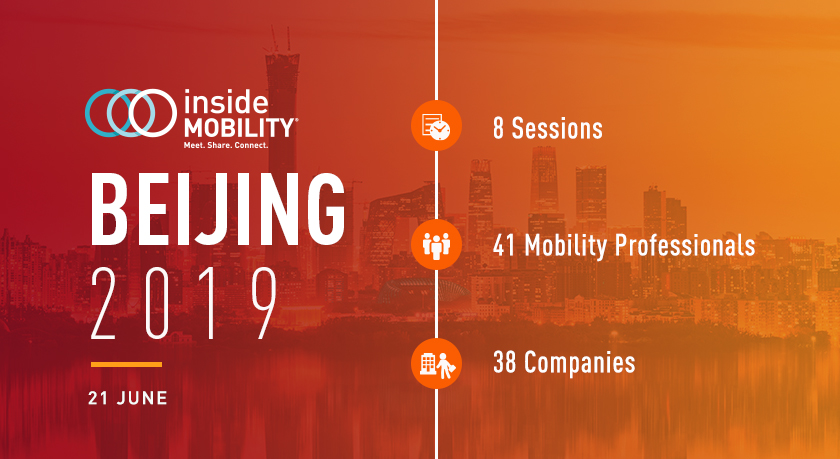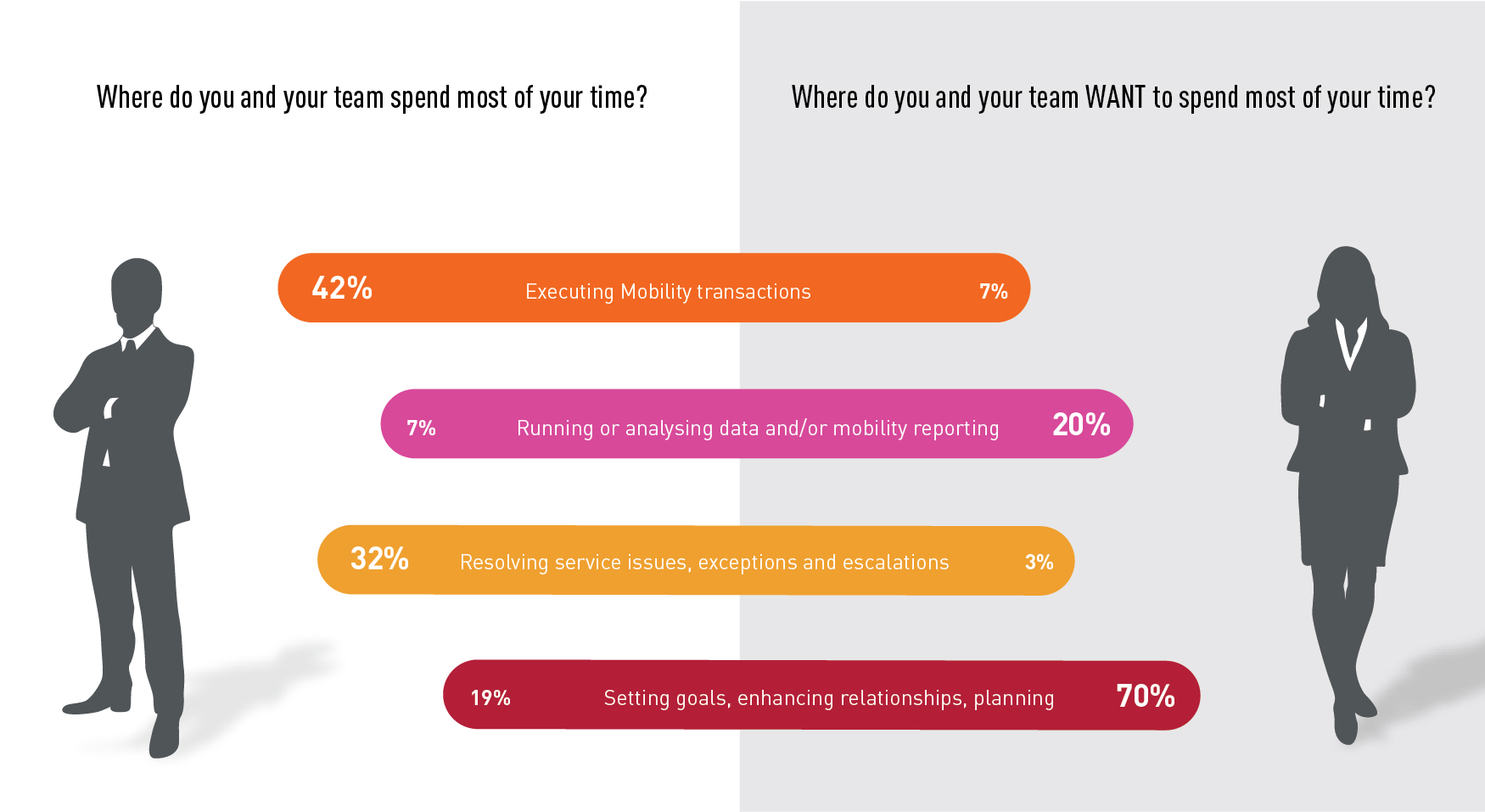
insideMOBILITY® Beijing 2019 Event Highlights
The Mobility Transformation in China
The insideMOBILITY 2019 “world tour” continued in Beijing, where more than 40 mobility leaders from across China met at Lenovo Headquarters on 21 June to connect with their peers, discuss trends in mobility policies and practices and explore the future of mobility in China. Delegates discussed trends in mobility and participated in peer-to-peer workshops.
The Future of Mobility in China
In a panel discussion led by Graebel’s Meng Ziang Chy, participants shared ways they believe the Mobility industry will transform in the coming years. Elley Cao, Senior Principal at Mercer, Laurence He, Director of Global Business Development at TMF Group and Fiona Bu, Senior Mobility Manager at Lenovo discussed how these trends will influence change in the mobility industry:
- Chinese companies continue to accelerate their global expansion and need to overcome the challenge of deploying their talents across the world.
- With increased technology advancements that has influenced daily lives, transferees will expect technology in the mobility industry to keep up and make relocating easier. As more mobility companies adapt to the demand in technology by adopting more advanced apps and tools to assist relocating employees, understanding how and when transferees or HR professionals want to interact with a consultant or with technology will be critical.
Home-Grown Mobility Programmes in China
Mobility programmes in China can’t be entirely modelled on those based in EMEA or other regions due to significant cultural differences – including family relations, length of assignments and even school systems.
In general, Chinese-based companies at this time are:
- Investing heavily in global expansion
- Opening new locations in Tier 2 and Tier 3 cities
- Actively recruiting Chinese nationals to bring them back to China from abroad
At insideMOBILITY Beijing, attendees discussed how the mobility function is relatively new in China, which can be both a challenge and a benefit. Mobility teams have a significant learning curve and since their policies and programmes need to be China-based, it’s not advisable to emulate programmes from other regions.
But given that the mobility function is newer, programmes and procedures are likely to be more innovative and less likely to be encumbered by a traditional programme management tendency.
Arguably the regulatory climate is more challenging for China-based mobility programmes. Not only must they deal with global differences from country to country, but China’s in-country regulations vary significantly between districts and cities.
Finally, Chinese companies and employees tend to be very technology driven. Mobility management systems and the employee engagement processes supporting a relocation experience tend to reflect this as companies seek to scale and streamline their programmes.
Getting Granular on Mobility Best Practices
Mobility policy design – Policy reviews can be triggered by many factors, including internal issues (e.g., acquisitions and expansions) and external developments (e.g., economic cycles and government policy/regulatory changes). The intra-China regulatory differences and cultural norms call for domestic China mobility programmes, just as within the U.S. or the EU.
Creating ideal employee experiences – Optimising the employee experience is a function of communication at all stages of the assignment – including repatriation. The best mobility programs address family considerations, maintain points of contact, balance simplicity with customisation and set the right expectation for an assignment.
Mobility technology – Technology-driven programmes management and employee engagement strategies are critical to create efficiencies and to enhance employees’ experiences. But the use of mobility technology shouldn’t completely replace personal communication, nor should it drive one-size-fits-all programmes or policies. Discover more about the Evolution of Technology here.
Engaging and partnering with stakeholders – Mobility leaders need to think broadly as they identify the full range of internal stakeholders for their programs. They should be proactive in their engagement with these stakeholders to the point where these business centres become mobility advocates within the organisation.
A Deep Dive into Global HR Challenges
Global HR programmes have a nearly impossible task of coordinating worldwide policies and processes in areas such as payroll. Country-by-country, requirements are becoming more diverse and there’s no movement toward standardisation. The challenge for HR is that few, if any, IT platforms can manage a locally compliant global payroll system. Not only is that a challenge for compliance but also for programme review and trends analysis. Outsourcing the function is an increasingly popular solution.
Where do Mobility professionals want to spend their time?
One question we continue to track at insideMOBILITY events is how mobility practitioners actually spend their time compared to how they want to spend their time. Once again, we saw that mobility professionals clearly want to better balance their day-to-day transactional focus with a more strategic approach.
insideMOBILITY Continues
Join us at our next insideMOBILITY event in Singapore on September 4th and mark your calendars for February 2020 to join us at insideMOBILITY Atlanta! Don’t miss these opportunities to meet, share and connect with your mobility peers!

